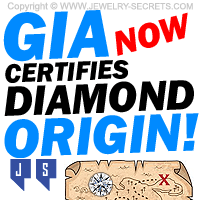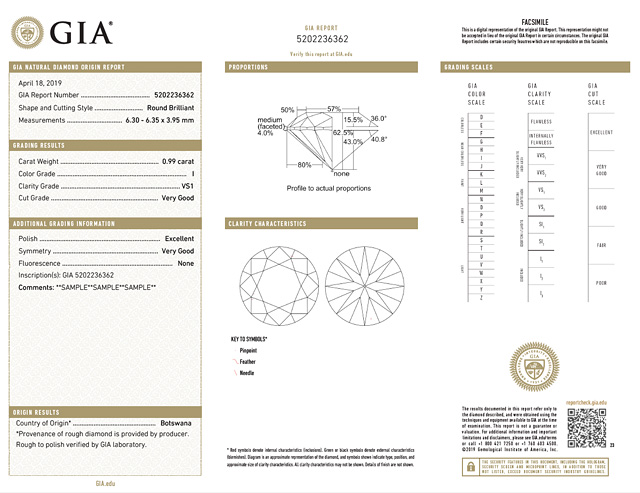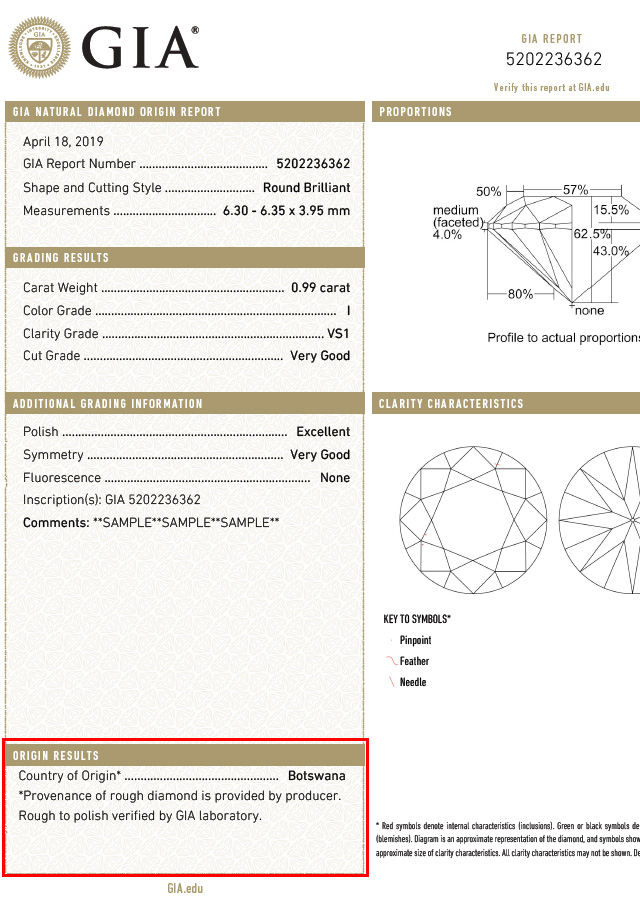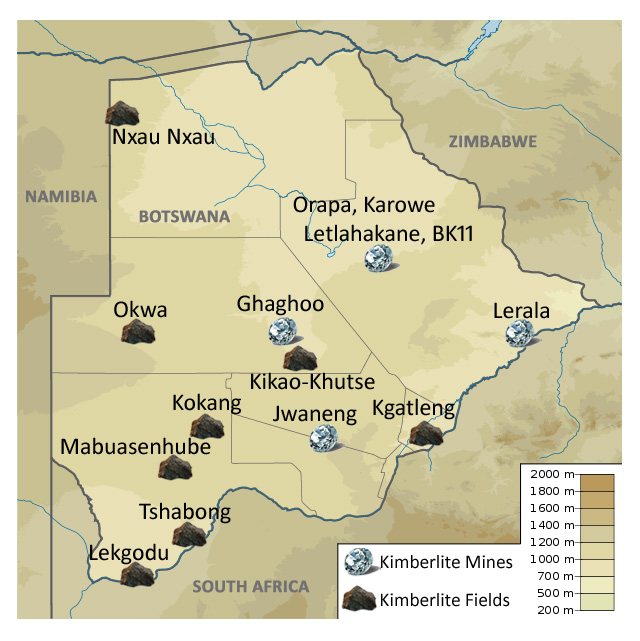GIA NOW CERTIFIES THE DIAMOND ORIGIN
GIA NOW STATES WHAT COUNTRY THE DIAMOND ORIGINATED FROM
This post contains affiliate links. If you use these links to buy something I may earn a commission. Thanks! As an Amazon Associate I also earn from qualifying purchases.

WOW!
This is a first.
GIA (the Gemological Institute of America) is now listing right on their diamond reports (what most people call “certificates“) where the diamond originated from.
This is amazing.
For now, you’ll be able to instantly see if your diamond is a “blood diamond” (also called conflict diamonds, war diamonds, hot diamonds, or red diamonds)… terms given to certain mines in Africa where civil wars, and child labor are still quite present and violent. Countries like: Angola, Ivory Coast, Sierra Leone, Liberia, Guinea, and Guinea Bissau. Diamonds mined in these war zones are sold to finance an insurgency, an invading army’s war efforts, or a warlord’s activity.
So now, GIA will tell you if it came from one of those conflict mines…
Sort of…
You see, GIA doesn’t pinpoint the exact mine itself, but they will tell you what country it came from (there are about 28 countries in Africa that mine diamonds). Take a look at the diamond report below:

This example diamond report is taken directly from GIA’s website about the diamond origin here.
Diamond Report Origin:
Take a closer look at the bottom of the report and the country of origin:

Notice that it lists the origin as: Botswana.
This is helpful, but do realize that there are many diamond mines in Botswana. See the map below…

Still, knowing that it comes from Botswana is more useful, versus a place like Angola (conflict mine).
To fully document this origin, GIA uses what they call “scientific matching“. This is rough-to-polish matching confirmation, from rough diamonds obtained from participating mining companies. GIA gets these rough rocks in a documented, sealed and untampered parcel. These are used to collect data and images for analysis. Then, once GIA receives a polished diamond for grading, they use these markers and data to scientifically match the polished diamond to the original rough, confirming the diamond’s country of origin.
Learn more in GIA’s video below:
Knowing the country is awesome!
It’s sort of like a “Made in the USA” seal of approval… At least you know. And you can feel better about your purchase.
Without this tracking, you would never truly know.
Until now.
Hopefully, in the future, all diamonds will be recorded and origin listed. It will add much needed transparency to the market, and make customers feel more comfortable in selecting a particular stone for an engagement ring.
One day, this will become the norm, and not the exception.
Only time will tell.
So what do you think about the origin of the diamond?
Does it make a difference in where, or whom you buy it from? (Also meaning you’ll have to buy a GIA graded diamond)… And then, it still may take years to see origins appear on the diamond reports sold today.
Let me know in the comments below.
Cheers! :)














Leave a comment